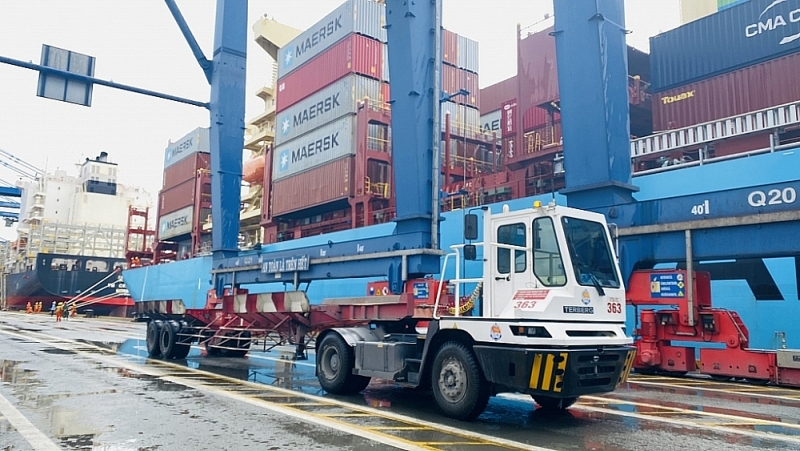 |
| Import and export activities of goods through Cat Lai Port. Photo: T.H |
Powerful moves
According to the General Department of Customs, Vietnam’s import and export activities have made strong strides, continuously achieving record milestones.
1995 was a milestone when many memorable events in Vietnam took place, marking the process of opening up and integrating deeply with the world. These events are when Vietnam officially joined the Association of Southeast Asian Nations (ASEAN), joined the ASEAN Free Trade Area (AFTA), applied to join the World Trade Organization (WTO), and normalized the Vietnam-US relations.
After nearly 30 years, Vietnam’s economy has made strong changes, gradually implementing the foreign policy of multi-lateralization and diversification, taking advantage of the possibility of trade cooperation, investment, integration, and technology transfer to developing the country’s economy.
In particular, Vietnam’s import and export activities have shown strong progress, consecutively achieving record milestones:
Total import and export value reached US$100 billion in 2007.
In 2011, the total import-export value doubled, reaching US$200 billion.
During the next four years (2015), Vietnam’s import and export reached the milestone of US$300 billion.
Especially, just two years later (in mid-December 2017), the total import-export value reached US$400 billion.
After that, every two years, Vietnam’s total import and export value increased by US$100 billion. Accordingly, the import and export value reached US$500 billion in the second half of December 2019 and US$600 billion in November 2021.
By December 2022, the total import and export value of Vietnam will reach US$700 billion.
According to the ranking of the WTO, Vietnam is continuously in the group of 30 countries and territories with the largest import and export value on a global scale. It is noteworthy that while the ranking of ASEAN countries has not increased in the past few years, the ranking of Vietnam has made remarkable progress.
Specifically, in 2021, Vietnam’s export value of goods ranked 23rd in the world, Vietnam’s import value of goods ranked 20th.
As of 2019, Vietnam ranked second in ASEAN, surpassing both Thailand and Malaysia and only behind Singapore.
According to the General Department of Customs, since 2012, Vietnam’s trade balance of goods has achieved a continuous surplus after a long period of deficit (trade deficit).
In 2022, Vietnam’s trade surplus is forecast to reach over US$10 billion.
Continuously improve the work of customs statistics
Along with the country’s economic development, over the years, the Customs sector has made constant innovations with a central role in commercial transactions. In particular, the statistics of import and export goods have become a main task of the Customs sector.
To meet the increasing demand for macroeconomic, microeconomic management, and information users, the Customs sector will focus on developing a number of contents related to statistics of import and export goods.
Specifically, build statistical products not only for state agencies but also for other information users to expand markets, develop production and business plans; and improve the competitiveness and integration ability of the economy in general.
Apply the achievements of the Fourth Industrial Revolution to automate the steps in collecting and processing statistical data. Towards the application of big data, applying advanced mathematical models and data analysis algorithms, artificial intelligence to serve analysis and forecasting; and support management, administration, and decision-making at all levels.
Simultaneously, build a national database on customs, including a database on imported and exported goods; share this information with domestic and foreign agencies, organizations and enterprises to both ensure state management of cross-border trade activities and support the private sector in investment, production, business as well as implementing Vietnam’s international commitments, contributing to promoting the economy’s deep participation in the global value chain.
By N. Linh/ Ha Thanh
